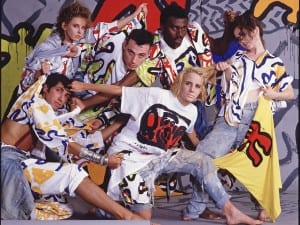If Edvard Munch is mentioned in conversation; The Scream will surely follow. More recently, he may be spoken of as the Norwegian painter whose 1895 pastel version of The Scream sold by Sotheby’s New York in May for a record-breaking $120 million; the most expensive work of art ever to sell at auction. However, after visiting the exhibition entitled Edvard Munch: The Modern Eye, recently opened at the Tate Modern, it’s not unrealistic that people will be more focussed on Munch’s self-portraits and short films rather than his iconic painting; bellowing a cacophony of dark emotion through the public psyche.
Upon entering the first room of the 11 room exhibition on the 4th floor of the gallery, one realises that this is far from a retrospective. It is a thematic exhibition built on all the characteristics of Munch’s personality and work. This room is where most of Munch’s self-portraits, painted or photographed over a period of 50 years, are currently housed. The variety of mediums and methods used are breath-taking. Oil paintings, lithographs, woodcuts and photographs… Not only are the variety of methods used impressive but also the depth of emotion displayed takes us closer to Munch’s state of mind during this period.
Another thought that comes to mind when considering Munch is the vastness of the number of reworkings he did on similar subjects. This is revealed to a great extent in Room 2, where the earlier and later versions of paintings such as Ashes (1895/1925), The Sick Child (1907/1925), Vampire (1893/1916-18), Two Human Beings: The Lonely Ones (1905/1933-35) are hung on opposite walls. This room represents a comparison for the earlier and later brushstrokes, tones and light in each painting and the mind gets somewhat thrown off course. The transformation of Munch’s artistic thinking and freedom can here be witnessed at its boldest.
After this point in the show, all the exhibits become inter-mingled with one another. Every Munch piece seems to compliment an earlier or later work, as do their subjects. His self-portrait with Rosa Meissner on the beach in Warnemunde II (1907, printed 2012) bears a haunting feeling as their figures are doubled by an invisible mirror of silence. Capturing the movement of the body and thus creating blurs and multiple exposures when taking photographs to offer a deeper, more internal understanding of the human psyche, changing the borders between that which is material and immaterial, and its deliverance to paper through gelatine silver print seizes the attention of the viewer just as Munch would have wanted. He is known to have referred to his paintings as his children. In many of the self-portrait photographs we see Munch in front of his paintings and this concept somehow reinforces the idea of leaving a true legacy. Each and every painting, photograph and film becomes his legacy and the representation of his body and mind in the same shot creates the aura of an eerie paternalistic figure.
The space in his paintings draws one closer to the canvases that carry his signature. One of these is the Galloping Horse (1910-1912). Hung tall on the wall, the horse is approaching with great speed and is within an inch of jumping out of the canvas. If there are two opposing subjects that are repeatedly seen in Munch’s work it is those of constant motion and eternal stillness, which can also be acknowledged in his six paintings of the Weeping Woman (1907-09). One can feel the pain she is enduring in her skin; she is sobbing yet gently still, standing in front of the wooden bed frame; the same colour as her hair.
Munch’s black and white silent film composed of the four short films he made around Dresden and Oslo(approximately 5 minutes long in total) portray him as a nimble cameraman catching all the motions of urban and suburban life. What is truly unique is his ability to turn the camera on himself, for us to see him as we see the others in the film and also perhaps for him to see himself through the eyes of other’s. Munch’s paintings are retrospective in the way that they are mostly products of a timeline of events that took place in his life, yet his photographs and films are beyond retrospective; they are autobiographical.
Loneliness, sickness, betrayal and a deep sense of pain are elements of emotion that render Munch so close to most art-lovers. Yet, what he achieved in his art he achieved in constant motion, in deep silence and with great gratitude for good art. Or, as he said, “A good painting with ten holes is better to have than ten poor paintings without holes”.
Edvard Munch: The Modern Eye, 28 June – 14 October 2012, Tate Modern, Bankside, London, SE1 9TG. www.tate.org.uk
Credits:
1. Edvard Munch
Self-Portrait: Between the Clock and the Bed1940-1943
Munch Museum
© Munch Museum/Munch-EllingsendGroup/DACS 2012
Text: Hande Eagle





